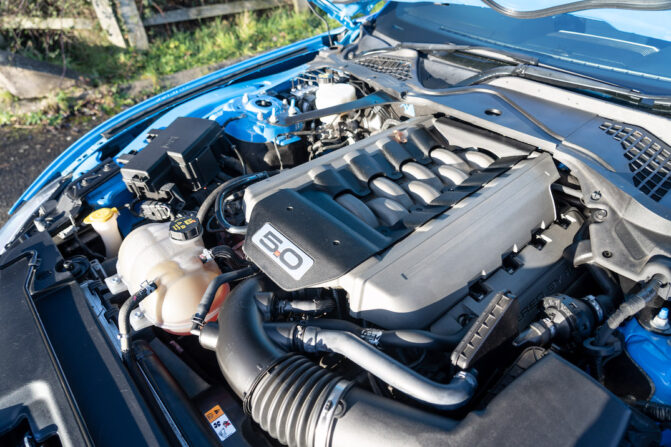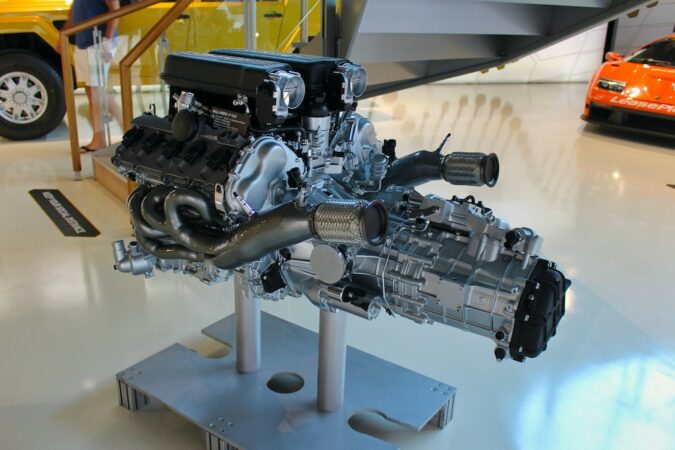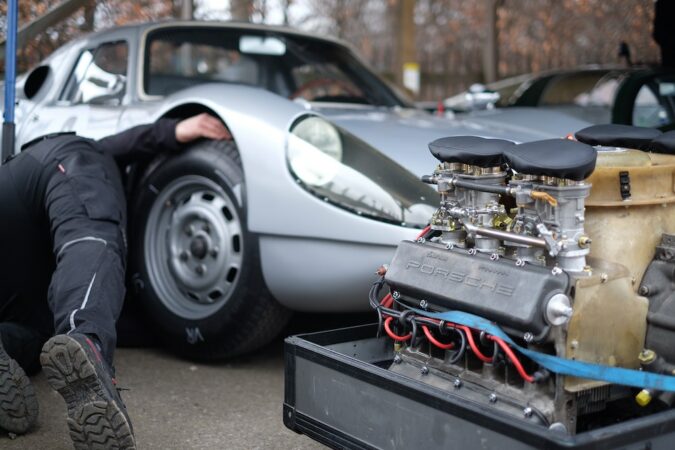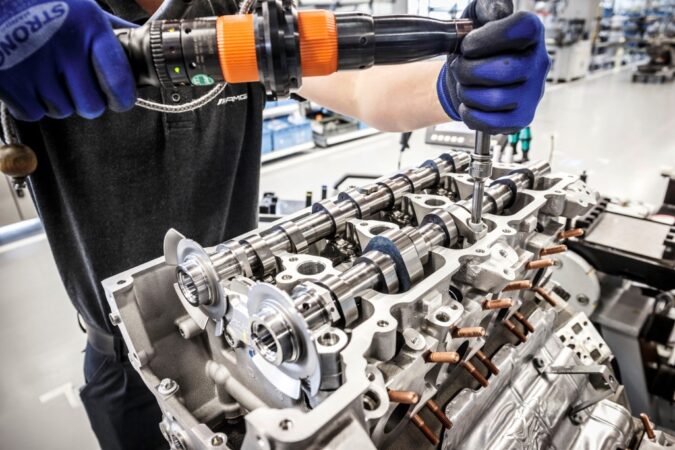What does liter mean in engine? You undoubtedly encountered a variety of engine sizes when hunting for a new car. Nowadays, there are fewer engine sizes available than in the past; this trend is referred to as “downsizing.”
Smaller engines frequently use less fuel and emit fewer emissions than larger ones. Smaller engines used to have much less power, but over the years, manufacturers have spent a tonne of effort and money improving their efficiency and power while keeping to ever-stricter pollution standards.
Turbocharging and hybrid technology are largely responsible for these smaller engines’ advances in power and efficiency. These developments have enabled little engines to attain an excellent balance of performance, fuel efficiency, and reduced exhaust pollutants.
A modern car with a 1.0-liter engine can be as powerful as one from the past with an engine that is at least twice as big. But you’ll have lower fuel consumption and fewer exhaust emissions, which should keep your car tax payments lower.
- Size Of An Engine
- Conversion Of Engine Size
- Smallest Car Engine
- Impact On Performance
- Impact On Fuel Economy
- What does HP Mean
- Selection For Engine Size
- FAQs
- Final Verdict
Engine Displacement
The space that the engine’s pistons occupy is typically mentioned when describing an automobile’s engine size. More air and fuel can be pushed by each piston when it moves, increasing engine power as engine size increases.
Keep in mind that an engine’s size can affect how much power it can create. Another important factor is whether or not a turbocharger or supercharger is employed. In today’s market, turbochargers are particularly common on many contemporary small automobiles.
Engine size is often expressed in cubic centimeters (cc), with 1,000cc equaling one liter.
It is often rounded up to the nearest tenth of a liter for engines with a capacity or displacement near or more than 1,000cc. As a result, an automobile with an engine that has a capacity of, say, 1,498cc will be referred to as having a 1.5-liter engine.
These cc/liter numbers represent the total cubic capacity of the engine’s cylinders. As a result, if an engine is described as a 2.0-liter, four-cylinder unit, it has an estimated 500cc capacity in each of its cylinders. The piston oscillates up and down inside the cylinders.
The engine’s combustion chamber is the area in which these pistons move, and it is here that an engine burns fuel to generate power. Engine size has a significant impact on a car’s fuel efficiency as well. If two vehicles are comparable other than their engine sizes and go the same distance. A vehicle with a smaller engine is more likely to use less fuel.
Therefore, even though a larger engine could sound alluring and even seem necessary on a larger, heavier vehicle, it’s a choice worth carefully examining because long-term operating costs will need to be taken into account.
What Does Liter Mean In Engine: Conversion Of Engine Size
Engine displacement, which is typically expressed in cubic centimeters, liters, or cubic inches, is defined as the entire volume of air/fuel combination an engine can draw in during one whole engine cycle. This is the volume swept by a piston engine when the pistons move from top dead center to bottom dead center. For comparison, 1 Liter equals 61.02 cubic inches (C.I.D.) 1 cubic inch equals 16 cm3 (C.C.). 1000 cubic centimeters make up one liter.
1 Cubic centimeter equals 0.001 Liter when converting from cubic inches to liters.
Engine liter size = Cubic Centimeters divided by 1000.
Example: 4300 ÷ 1000 = 4.3L.
- 6.2 liters to cubic inches is 378.
- 5.3 liters to cubic inches is 323.426.
- 5.7 liters to cubic inches is 347.835.
- 6.6 liters to cubic inches is 400.7.
- 7.3 liters to cubic inches is 445.
- 6.4 liters to cubic inches is 390.55.
- 350 cubic inches to liters is equal to 5.736 liters because 1000 cubic centimeters equals 1 liter.
- 4.6 liters to cubic inches is 280.709.
- 5.4 liters to cubic inches is 330 cubic inches.
- 6.7 liters to cubic inches is 408.86.
- 4.7 liters to cubic inches is 286.812.
- 302 cubic inches to liters is 4.94889.
- 5.2 liters to cubic inches is 317.323.
What Does Liter Mean In Engine: Smallest Car Engine
The smallest car models typically have the smallest engines. A 1.0 to 1.2-liter engine is often found in a city car like the Toyota Aygo or a supermini like the VW Polo. Even if they aren’t particularly powerful, they can still be quite responsive, provided the car isn’t very heavy.
As a result of their decreased capacity and hence reduced fuel consumption, they offer good fuel efficiency. This is excellent if your driving style is primarily stop-and-go, as it may be in a city with many traffic lights, or if you frequently do short trips.
It also means that they often have minimal emissions, but you give up the power you would otherwise gain from a larger engine to achieve this. Additionally, you frequently have poorer fuel efficiency on highways since your smaller engine needs to work harder to maintain speed. A little engine like this one can be ideal for you if you’re searching for a car that will primarily be used for errands like running to the store or dropping the kids off at school.
What Does Liter Mean In Engine: Impact On Performance
A car with a bigger, more powerful engine is likely to be able to accelerate more quickly and haul higher weights than a car with a smaller engine can handle since a bigger engine can typically burn more fuel and provide more power.
Given that certain smaller turbocharged engines can generate more power than other bigger, more antiquated engines, this assertion is less true today than it was in the past. A smaller turbocharged engine’s power delivery varies from an engine without a turbo, though known as naturally aspirated.
You might feel the acceleration more quickly after pressing the accelerator in a normally aspirated car with a larger engine. It can take the turbo a few seconds to spin and draw air into the engine, causing a delay in a turbocharged car known as “turbo lag.” However, turbo lag is much less of a problem with smaller turbocharged systems, including those seen in contemporary engines.
The size of the vehicle the engine will be in should also be considered, as the heavier the vehicle, the more performance and economy will be compromised. For instance, a 1.4-liter engine in a supermini will often provide quick acceleration and great fuel efficiency, but the same engine in a compact SUV will need to work considerably harder and consume more fuel in order to achieve equivalent performance.
What Does Liter Mean In Engine: Impact On Fuel Economy
A larger engine typically uses more fuel during the same journey than a smaller engine because it can burn more fuel per revolution it makes in a minute (rpm). This is a crucial factor to take into account while picking a new car. It’s important to consider how much power you truly need because larger, more powerful engines typically cost more and consume more fuel than smaller ones.
A smaller, less powerful engine might prove more fuel-efficient if your daily driving doesn’t frequently require forceful acceleration, hauling big loads, or cruising at high speeds. Users of company cars will also save money on Benefit-in-Kind (BiK) tax because that tax is strongly correlated with CO2 emissions.
Cars with small engines are typically more suited for city driving. They offer sufficient performance for short trips, such as ones to the store, the office, or a school, where going fast and accelerating quickly isn’t really necessary. It makes sense to keep the engine modest and benefit from the improvements in fuel economy since it isn’t frequently required to provide a lot of power.
Larger engines are traditionally preferred by people who frequently travel at high speeds on the freeway since they create high levels of power with less effort.
Keep in mind that your driving habits will also affect how much fuel you use. It will assist save fuel to accelerate and brake gently and keep the revs low by shifting up to the highest gear possible. Maintaining properly inflated tires could result in annual savings of several hundred pounds. You could also check out our guide on whether does driving faster use more gas.
Your insurance rate will also be influenced by the size and power of your car’s engine. Smaller, less potent engines are more common in vehicles in low insurance classes or those that are less expensive to insure.
What Is HP Meaning
The power an engine produces is referred to as horsepower. It is measured by the force needed to move 550 pounds one foot in a second or 33,000 pounds one foot in a minute. Power is measured by how quickly the task is finished.
One horsepower is said to be equal to one horse, and while that is somewhat accurate, it is not in the way you may anticipate. Horsepower is a totally fictitious unit of measurement. James Watt, the inventor of the steam engine, wanted to assess the efficiency of his machines against the horse that had previously performed their tasks. This was back in the late 1760s.
According to Watt, one horsepower is equal to the amount of energy needed to lift 33,000 pounds of water one foot into the air from the bottom of a 1,000-foot deep well in the space of 60 seconds. Even if it’s difficult to conceive, Watt was able to readily promote his steam engines to potential buyers because of this.
Before you get any ideas, modern automobile manufacturers no longer place their vehicles in front of wells and draw water to determine how much performance they have. Instead, the force is determined using a dynamometer, also referred to as a dyno.
Average Horsepower Of A Car
A common car’s average horsepower should typically lie between 180 and 200 horsepower. However, larger and more opulent cars, like SUVs or performance sedans, frequently feature base engines with more horsepower than 300. Even so, smaller vehicles can have less than 100 horsepower.
One of the main factors you may keep in mind when buying a new car is horsepower. Beyond simply being aware of the average horsepower, it’s crucial to comprehend what it is, how it is produced, and how it affects your driving experience.
Considerations For Selecting A Car Engine Size
What Does Liter Mean In Engine, Considerations #1: Running Expenses
Generally speaking, a larger engine will use more gasoline and emit more emissions. A car’s road tax will increase in proportion to how many emissions it emits. A tiny automobile with a 1.0-liter turbocharged engine can be your best option if you prioritize minimal operating costs in your daily commute.
A larger, more powerful gasoline or diesel engine may utilize less fuel if you frequently make long trips. Cars with smaller engines also typically have reduced insurance costs, though this will vary by model.
What Does Liter Mean In Engine, Considerations #2: Driving In Towns
Your greatest option if you frequently drive about town is a vehicle with a smaller engine. More electricity than you require is unnecessary, and your financial account will appreciate it as well.
What Does Liter Mean In Engine, Considerations #3: Interstate Driving
The ideal option for you will be a mid-size diesel engine if you spend most of your time on the highway. These have a respectable level of overtaking power and great fuel efficiency.
What Does Liter Mean In Engine, Considerations #4: Speeding Up
Have a hankering for speed? You’ll need a vehicle with a powerful, more powerful engine.
However, some of the best hot hatchbacks have engines that are around 2.0 liters in size, so it’s not a strict rule.
FAQs: What Does Liter Mean In Engine
What Engine Does My Car Have
Your vehicle identifying number, or VIN, can be used to determine the size of your engine. The model year is indicated by the tenth number from the left, while the engine codes are indicated by the eighth number. You only need to mention those two characters to the store clerk to get started.
How Much HP Does A Turbo Add
A turbo can increase an engine’s horsepower by 30–40%, or roughly 70–150 HP.
How Many CC In A Liter
A liter is 1000 cc (cubic centimeters).
What Does LT Mean On A Car
The LT abbreviates Luxury Touring and designates trim levels above the LS base versions. Chevy Trailblazer is one of the cars with LS trims that is widely used.
What Does EcoBoost Mean
EcoBoost is a combination of the words Eco (signifying fuel economy) and Boost (for power), which perfectly captures what this engine can do. There are many different Ford automobiles, trucks, and SUVs that can be equipped with the current Ford EcoBoost line of engines, which includes 3-cylinder, 4-cylinder, and V6 engines with displacements ranging from 1.0 liters to 3.5 liters.
How Many Cubic Inches In A Liter
A liter has a volume of 61.0237441 cubic inches. Multiply the liter value by 61.0237441 to convert liter to cubic inch.
What Does CC Mean In Engines
Cubic centimeters, or simply cm3, is a metric quantity used to express the volume or capacity of an engine. It is a unit used to calculate the volume of a cube with dimensions of 1 cm x 1 cm x 1 cm. Another name for CC is engine displacement. It refers to the distance traveled by the piston inside the cylinder during one full cycle of the engine, from the Top Dead Center (TDC) to the Bottom Dead Center (BDC). In order to match cubic centimeters, manufacturers also measure engine volume in liters.
How Many Cubic Inches Is 6.2 L
There are 378.347 cubic inches in 6.2 liters.
What Does Liter Mean In Engine
Engine size, which is expressed in cubic centimeters, is the amount of fuel and air that can be forced into a car’s cylinders (cc). The size of an automobile engine is often stated in liters, which are rounded to the nearest tenth of a liter. For instance, a car with a 1390cc engine can be referred to as a 1.4 liter.
What Is Engine Displacement
Internal combustion engine volume is quantified by engine displacement. Despite not being a direct proportion of the total power generated, it frequently has a positive correlation with output power. An engine’s rotating cylinders do generate power by expelling a specific amount of air. Low fuel efficiency is typically the result of large engine displacement.
What Engines Are Compatible With My Car
Verify the combined length of the engine and transmission components. Assemblies should all be the same length. A few inches shorter or longer may be acceptable, but it must exceed 3 inches, or the assembly will not fit. The engine has to have space to maneuver.
What Does Turbocharged Mean
A turbocharged engine forces extra compressed air into the combustion chamber through a turbine powered by the engine’s exhaust gas. A turbocharged or turbo engine can increase fuel efficiency and increase the power of your vehicle.
What Is Good Horsepower
You can accelerate from 0 to 60 mph faster with a larger engine, such as the one found in a performance car. These and other factors all affect how much horsepower is required for modern cars to function properly and efficiently. Modern supercars have more than 500 horsepower, and most vehicles with power ratings over 300 horsepower are considered to be serious performance vehicles.
What Makes A Car Fast
Power, power train, weight, and aerodynamics are four interrelated aspects that affect how fast an automobile travels. Speed is correlated with horsepower in automobiles. Therefore, you need more horsepower if you want to go farther and accelerate more quickly. Contrarily, torque is the expression of a rotating or twisting force. Torque is produced in cars by the engines, which revolve around an axis. Another way to increase a car’s speed is to use forced induction, which are turbochargers and superchargers together.
Which Car Has The Most Horsepower
The Rimac Nevera is proof that you no longer need a huge engine to produce a lot of horsepower. This amazing vehicle boasts 1,914 horsepower and 2,300 Nm of torque due to a 120 kWh battery and four electric motors.
What Does CC Stand For In Engines
The engine’s combustion cylinder’s cubic centimeter capacity, or CC, is what determines the engine’s maximum power output.
What Does RPM Mean On A Car
RPM, which stands for revolutions per minute, is a measurement of how quickly a machine is running at any one time.
What Are Cylinders In A Car
An essential component of the engine is a cylinder. It is a chamber where fuel is burned to produce electricity. A piston and inlet, and exhaust valves are located at the top of the cylinder. Your vehicle is propelled by the reciprocating motion of the piston, which oscillates up and down.
What Does Torque Mean In A Car
When an engine exerts itself, torque, which is a twisting force, speaks to the rotational force of the engine and quantifies how much of that twisting force is accessible. Your car’s speed is determined by both horsepower and torque.
Final Verdict: What Does Liter Mean In Engine
What does liter mean in the engine? The size of the engine in an automobile is frequently stated when a manufacturer or journalist discusses it. The size of a car’s engine, along with its power and torque, are factors that are highly valued. Yet some people may question why engine size is important in the first place. In this article, we go through what people really mean when they talk about the engine size and how big of an impact it has on an engine and the vehicle it powers.
An engine’s size, often known as its displacement, is determined by how much room its cylinders occupy. The 5.0-liter engine of the Ford Mustang serves as an illustration. Another common name for it is the 302 cubic inch motor. Simply said, this indicates that the engine’s cylinder space can hold 5 liters or around 302 cubic inches. Naturally, higher displacements are more common in vehicles with more cylinders.




